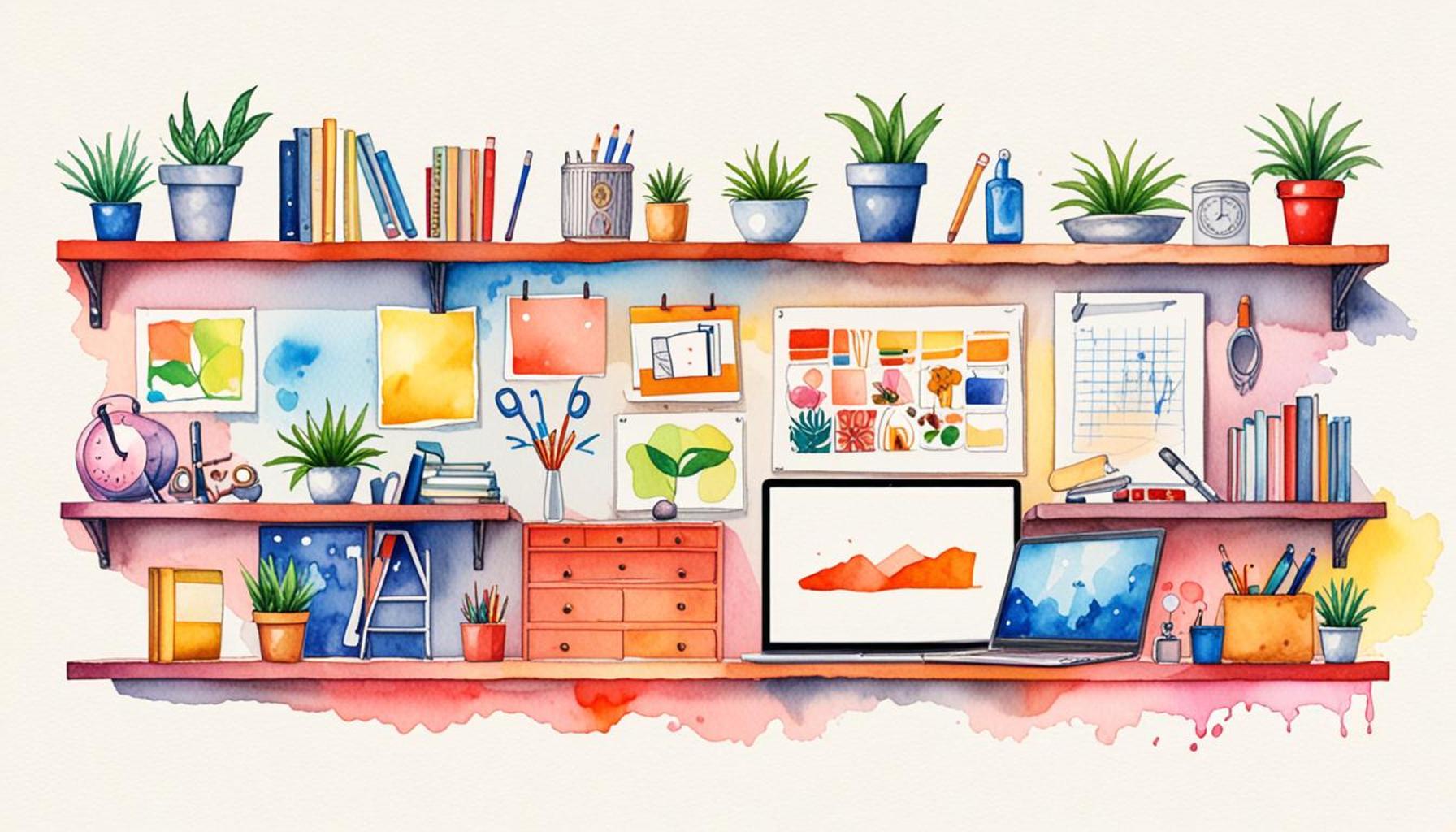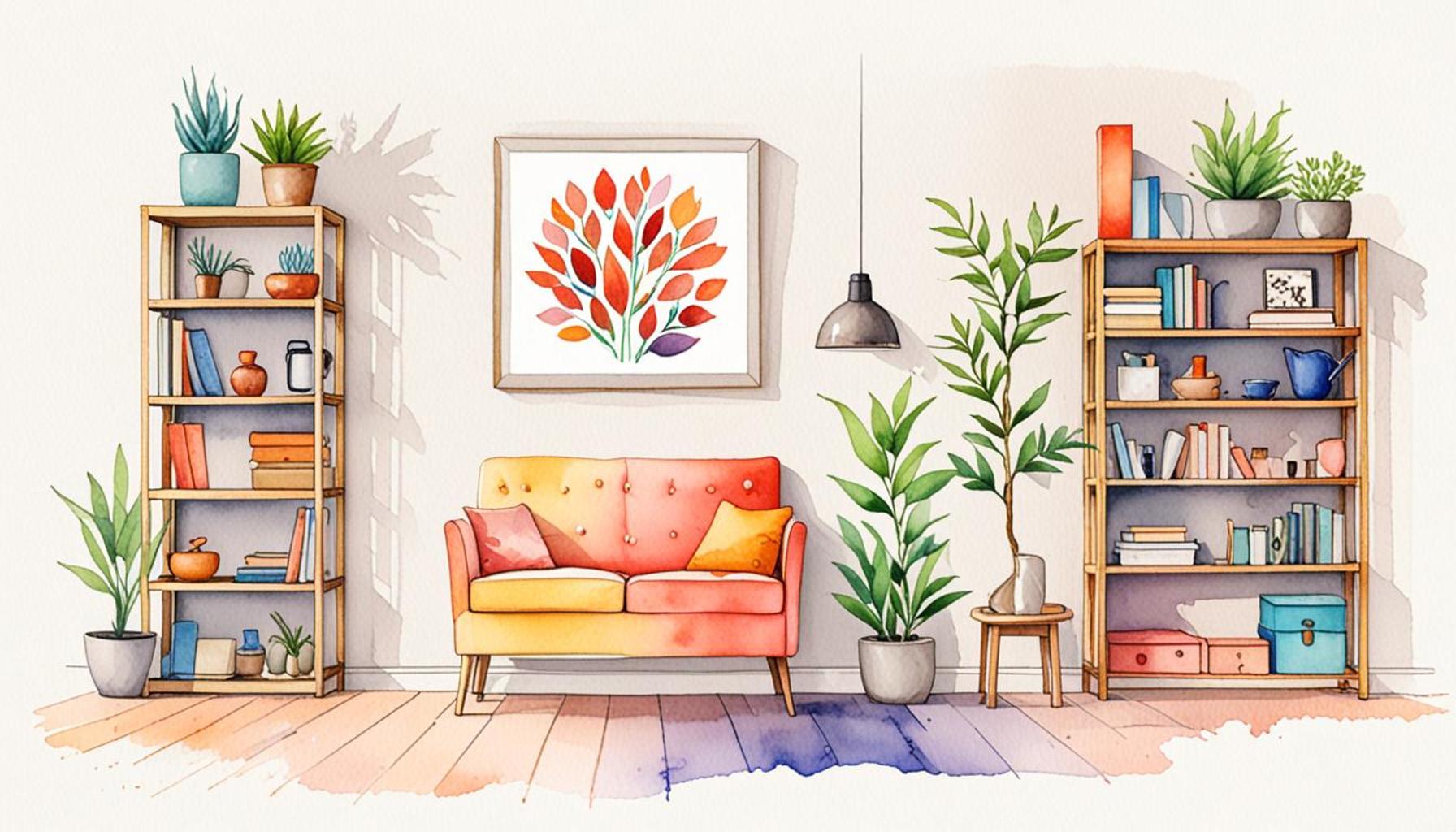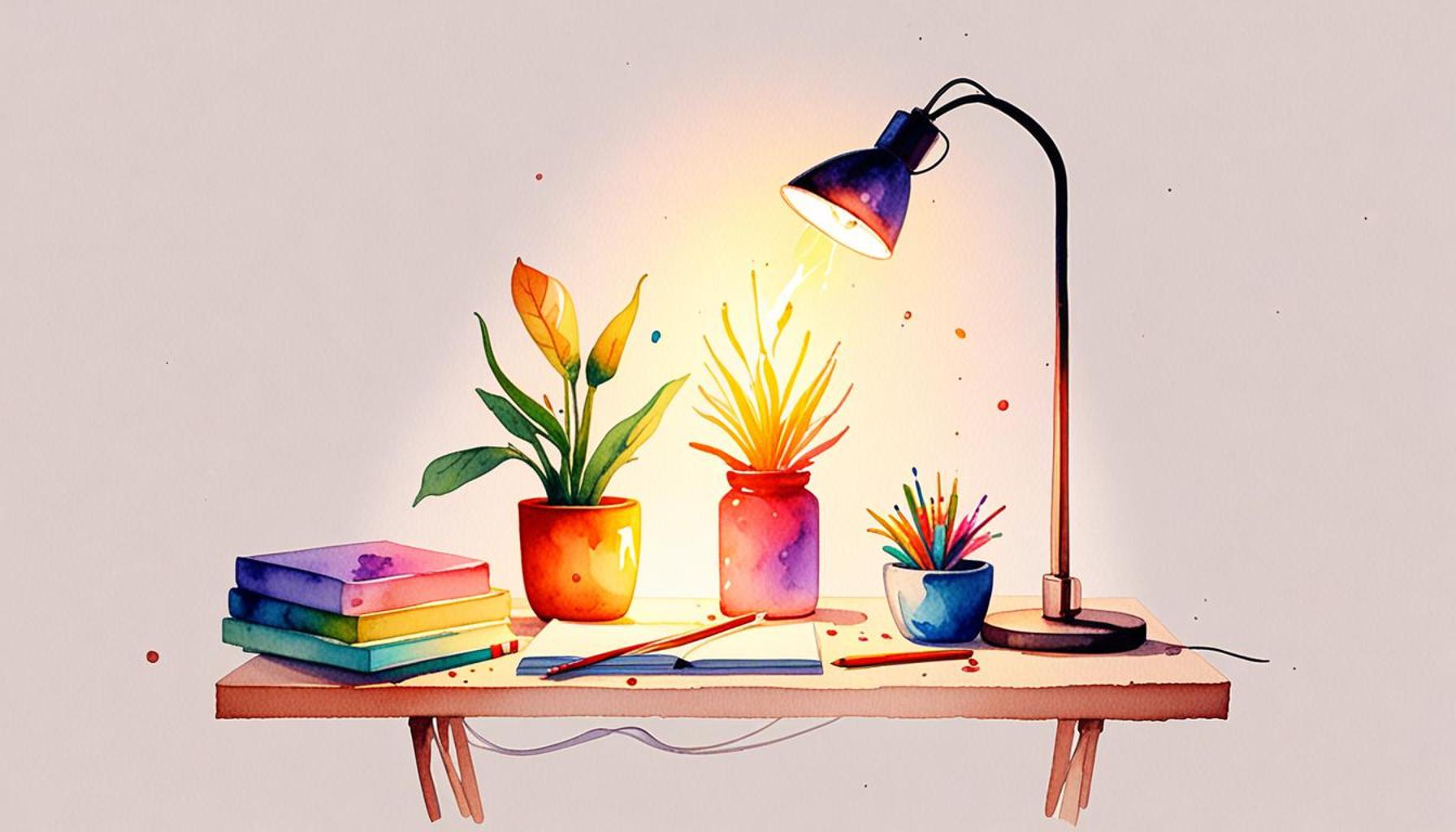Intentional Design and Productivity: The Relationship Between Organized Spaces and Personal Efficiency

The Impact of Space Design on Productivity
Have you ever noticed how a cluttered desk can drain your motivation? The design of our environments can significantly impact our ability to focus and perform. In today’s fast-paced world, being intentional about our spaces is crucial for enhancing productivity, whether at home or in the office.
Intentional design goes beyond mere aesthetics; it encompasses creating environments that actively support and enhance efficiency. Each element of our surroundings plays a role in shaping our behavior, mood, and overall effectiveness. Here are some key aspects to consider:
- Clarity: Organized spaces reduce distraction and provide a clear pathway for thought. For instance, a tidy desk equipped with only essential items allows individuals to concentrate on their tasks without the visual chaos that clutter often brings. A study conducted by the Princeton University Neuroscience Institute found that physical clutter competes for our attention, making it harder to focus on what truly matters.
- Functionality: Designs that emphasize functionality support smoother workflows. An ergonomic workspace, complete with adjustable chairs and sit-stand desks, facilitates comfortable movement, reducing fatigue and enabling longer periods of focused work. Tech companies like Google have recognized this by designing their offices with open spaces that promote collaboration while also providing quiet zones for deep work.
- Aesthetics: Visually appealing environments can enhance creativity and happiness. Studies suggest that incorporating natural elements such as plants or art can significantly lift the mood of a workspace. For example, adding a splash of color through wall paint or artwork has been shown to stimulate creative thinking and reduce stress levels, leading to a more vibrant and motivated workforce.
According to recent studies, a well-organized workspace can increase productivity by up to 20%. This statistic serves as a testament to the profound impact of intentional design on our daily routines. Understanding this relationship can pave the way for individuals and organizations to cultivate environments that not only are visually appealing but also facilitate efficiency and success.
In this article, we will delve deeper into the principles of intentional design and its remarkable influence on personal efficiency. From home offices to corporate settings, the way we arrange our spaces can make all the difference in achieving our goals. As the boundary between work and personal life continues to blur, creating intentional spaces becomes more important than ever.
In conclusion, it’s clear that the environments we inhabit have a direct correlation with our productivity levels. By embracing the principles of intentional design, we can transform our spaces into catalysts for efficiency, enabling us to thrive in all areas of our lives.

DISCOVER MORE: Click here to uncover seasonal decluttering tips
Creating Spaces That Foster Efficiency
The relationship between intentional design and productivity isn’t merely about how things look; it also involves how they function. When we curate our environments to enhance efficiency, we are essentially creating frameworks that guide our actions and facilitate our tasks. This deliberate focus on spatial organization can lead to remarkable improvements in our work habits and overall satisfaction. Here are some essential elements to consider in crafting efficient spaces:
- Decluttering: The act of decluttering our physical spaces is step one toward increased efficiency. A recent study revealed that 77% of Americans experience feelings of stress when clutter surrounds them. By reducing the number of items in our workspaces to only those necessary for our current tasks, we create a more tranquil environment that allows our minds to operate smoothly and without distraction.
- Natural Light: The benefit of natural light on productivity is backed by research. A study from the University of Nevada found that exposure to natural light boosts mood and energy levels, significantly sharpening focus and engagement. Designing spaces with ample windows or using light-enhancing color schemes can transform a dreary office into a stimulating locale that fosters creativity and motivation.
- Personalization: While uniformity in design can sometimes serve a purpose, allowing personal touches in a workspace infuses it with character and motivation. According to a survey by Herman Miller, employees who personalize their workspace report higher job satisfaction. Whether it’s photographs, inspirational quotes, or a favorite mug, these personal items add a sense of ownership and connection to the environment, enhancing overall productivity.
- Technology Integration: Seamless integration of technology into our workspaces can streamline tasks and optimize workflow. Office layouts that incorporate systems for easy access to devices, cables, and tools can minimize disruptions. Emphasizing efficient organization of tech resources not only saves time but can also prevent frustration often caused by tangled cords and misplaced gadgets.
As we dissect these fundamental aspects, it becomes clear that intentional design involves strategic planning and awareness of how our surroundings shape our behaviors. It encourages us to step back and evaluate whether our current environments are working for us or against us. When we intentionally design our spaces to cater to our specific needs and preferences, we create a backdrop that supports not just productivity, but also personal well-being.
This alignment of space and purpose is crucial, especially in the modern context where home offices and remote work become increasingly commonplace. The opportunity lies not just in reducing distractions, but in embracing design principles that elevate our efficiency and enhance our daily experiences. Exploring the connection between organized spaces and personal efficiency can ultimately lead both individuals and organizations towards success.
| Advantage | Description |
|---|---|
| Maximized Focus | Organized spaces reduce distractions, facilitating a greater degree of concentration and task commitment. |
| Enhanced Workflow | Intentional design of workspaces streamlines processes, ensuring each tool and resource is within easy reach, enhancing productivity levels. |
The synergy between an organized space and personal efficiency extends beyond mere aesthetics; it encompasses a broad range of benefits for both personal and professional lives. For instance, maximized focus is a crucial aspect of productivity. When physical clutter is minimized, it paves the way for mental clarity, allowing individuals to immerse themselves fully in the tasks at hand. Consequently, distractions diminish, leading to improved work quality and output.Furthermore, enhanced workflow plays a vital role in personal efficiency. An intentionally designed workspace arranges essential tools conveniently, eliminating the time wasted searching for items and thereby enabling a smoother execution of tasks. Research indicates that such optimized environments can increase performance by up to 25%, making the relationship between organized spaces and productivity not just desirable, but essential for success. Exploring these dimensions reveals the profound impact that intentional design can have on our daily efficiency, making it a captivating topic worth delving into further.
DISCOVER MORE: Click here to enhance your digital organization skills
The Influence of Color and Layout on Productivity
As we delve deeper into the relationship between intentional design and productivity, one cannot overlook the impact of color schemes and spatial layouts. These two factors are more than merely aesthetic; they play a crucial role in emotional and cognitive responses, directly influencing personal efficiency. Understanding how to harness colors and layout designs can lead to enhanced workplace productivity:
- The Psychology of Color: Colors evoke emotions and can significantly alter mood and motivation. Research from the University of Texas suggests that certain colors can enhance performance. For instance, blue hues are known to stimulate creativity, while green can create a calming effect. In contrast, yellow evokes feelings of happiness and energy. When designing workspaces, incorporating these colors thoughtfully can create an environment that drives productivity and inspiration.
- Open vs. Closed Layouts: The choice between open and closed workspace layouts can dramatically influence team dynamics and individual productivity. A study published in the Journal of Environmental Psychology indicates that open layouts encourage collaboration, but too much openness can lead to distractions. Therefore, including zones that allow for both collaboration and focused work can maximize productivity, catering to the diverse needs of employees.
- Ergonomic Design: Beyond aesthetics, ergonomics play a critical role in productivity. A workspace designed with ergonomic principles—such as adjustable chairs and desks, proper monitor height, and supportive furniture—reduces discomfort and fatigue. According to the Occupational Safety and Health Administration (OSHA), an ergonomic workspace can enhance worker efficiency by up to 25%. When individuals can work comfortably, they are likely to stay focused and engaged for extended periods.
Additionally, effective design does not only enhance individual productivity; it fosters a sense of community and collaboration within organizations. Creating spaces designated for teamwork—complete with comfortable seating, collaborative tools, and an inviting ambiance—can lead to innovation. Research from the Harvard Business Review indicates that teams who feel connected and engaged in their environments are more likely to produce creative solutions and work more efficiently.
Moreover, incorporating elements of biophilic design—where nature is integrated into the workspace—can have profound effects on productivity. Studies suggest that access to plants, natural textures, and designs that mimic natural environments can increase focus and reduce stress levels. In fact, an experiment conducted by the University of Exeter found that plants in the workplace can boost productivity by up to 15%. This evident link highlights how nature-inspired designs can serve as effective tools for enhancing efficiency.
Investing in thoughtful design choices is more than a trend; it is a strategic approach to improving personal efficiency. As organizations continue to adapt to evolving work models, being mindful of these details will not only support individual well-being but also pave the way for collective success. As we strive to cultivate spaces that resonate with our unique needs, the importance of intentional design will continue to shape how we navigate our professional lives.
DISCOVER MORE: Click here to uncover clever storage solutions
Conclusion
In summary, the exploration of intentional design clearly underscores its significant impact on personal efficiency and overall productivity. By investing in organized spaces that prioritize ergonomics, color psychology, and appropriate layouts, individuals and organizations can create environments that foster not only personal well-being but also collaborative spirit and creativity. The evidence suggests that when employees are placed in thoughtfully designed workspaces—ranging from biophilic elements, which promote connection with nature, to strategic zoning for both collaboration and concentration—they experience heightened focus, reduced stress, and increased output.
The future of workplace design will undoubtedly continue to evolve, influenced not only by aesthetic trends but also by a deeper understanding of human psychology and behavior. As data highlights the measurable benefits of these design elements, companies should not overlook the potential return on investment in terms of employee productivity and satisfaction. Whether it’s adopting a strategic color palette or optimizing spatial arrangements, organizations that prioritize intentional design will find themselves better equipped to navigate the challenges of modern work environments.
Ultimately, fostering an awareness of how space influences productivity encourages a proactive approach to workplace improvement. As we reflect on these principles, embracing intentional design in our professional spaces emerges not just as a choice but as a necessary step toward achieving a harmonious blend of productivity and well-being. As we continue to adapt and innovate, let us commit to designing spaces that not only enhance efficiency but also inspire joy and creativity in our daily endeavors.


